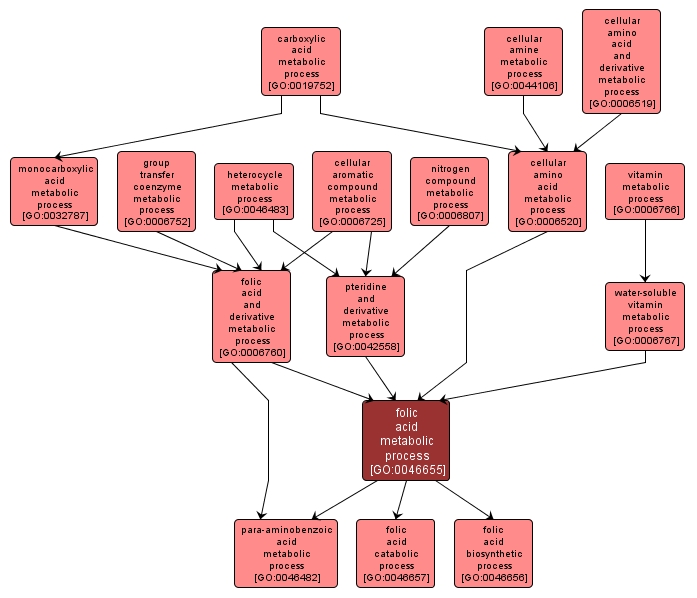GO TERM SUMMARY
|
| Name: |
folic acid metabolic process |
| Acc: |
GO:0046655 |
| Aspect: |
Biological Process |
| Desc: |
The chemical reactions and pathways involving folic acid, pteroylglutamic acid. Folic acid is widely distributed as a member of the vitamin B complex and is essential for the synthesis of purine and pyrimidines. |
Synonyms:
- vitamin B9 metabolism
- folate metabolic process
- vitamin M metabolism
- vitamin M metabolic process
- folate metabolism
- folic acid metabolism
- vitamin B9 metabolic process
|
|

|
INTERACTIVE GO GRAPH
|














